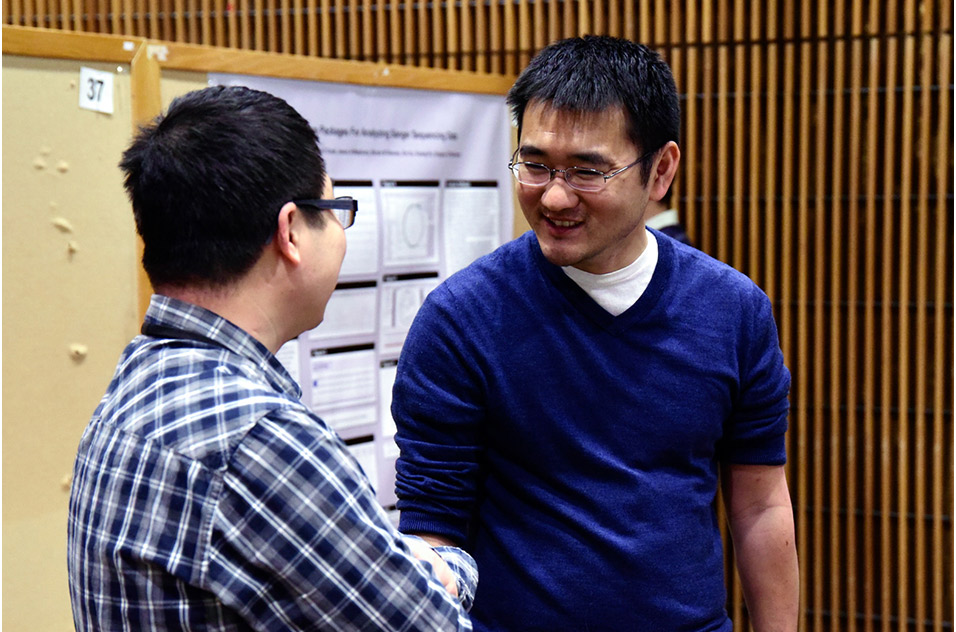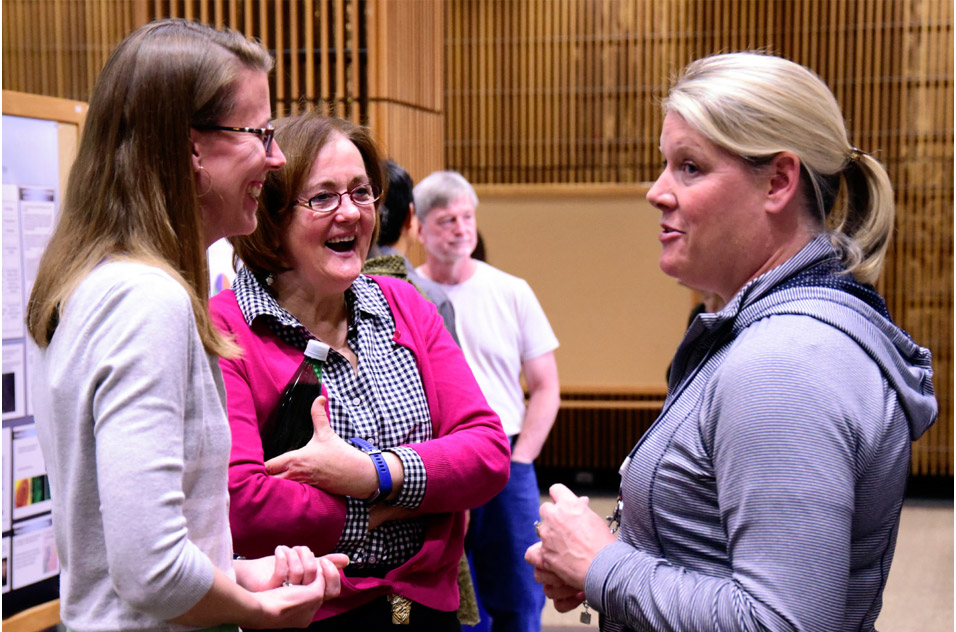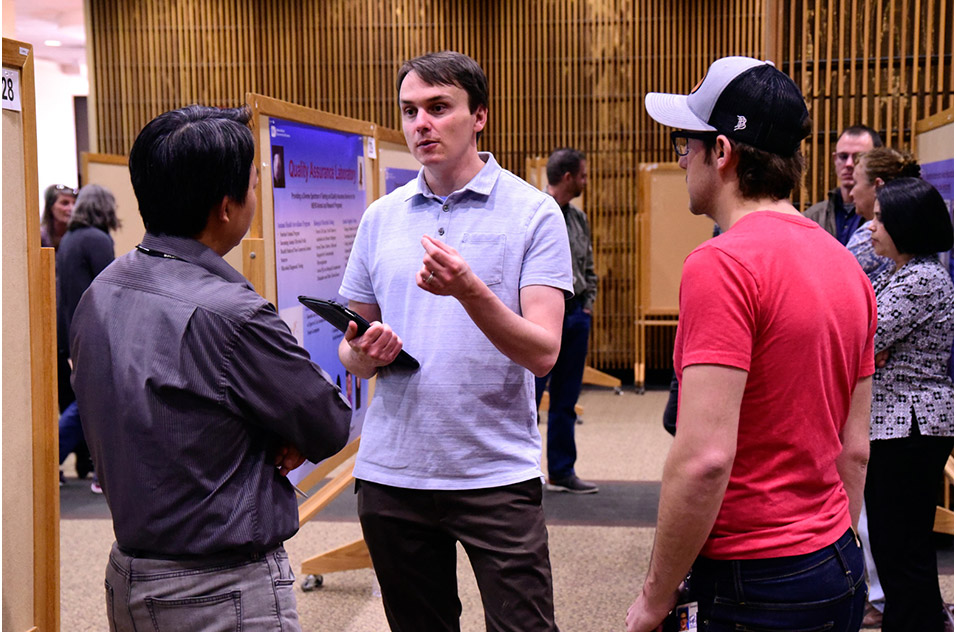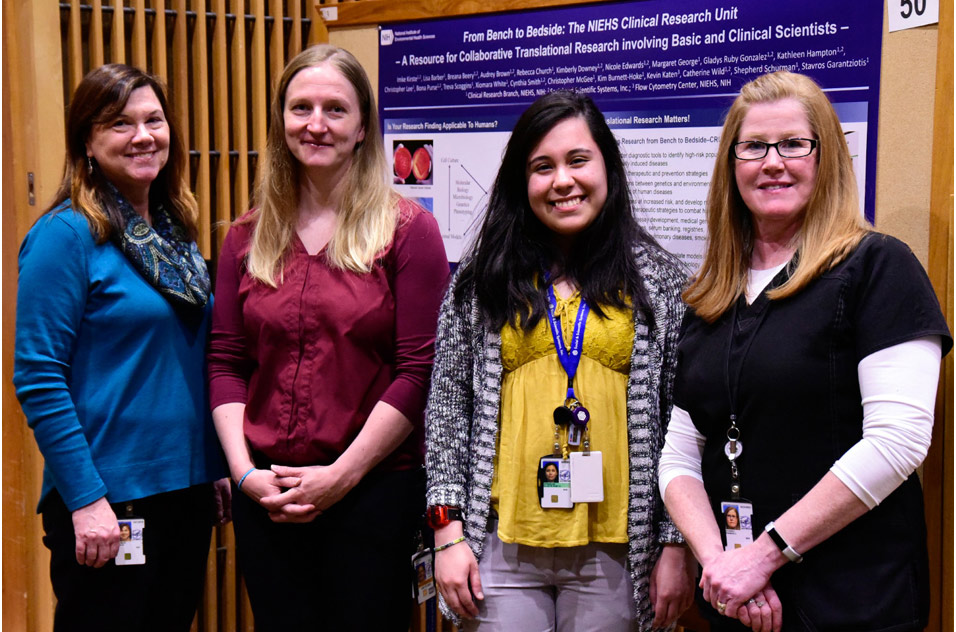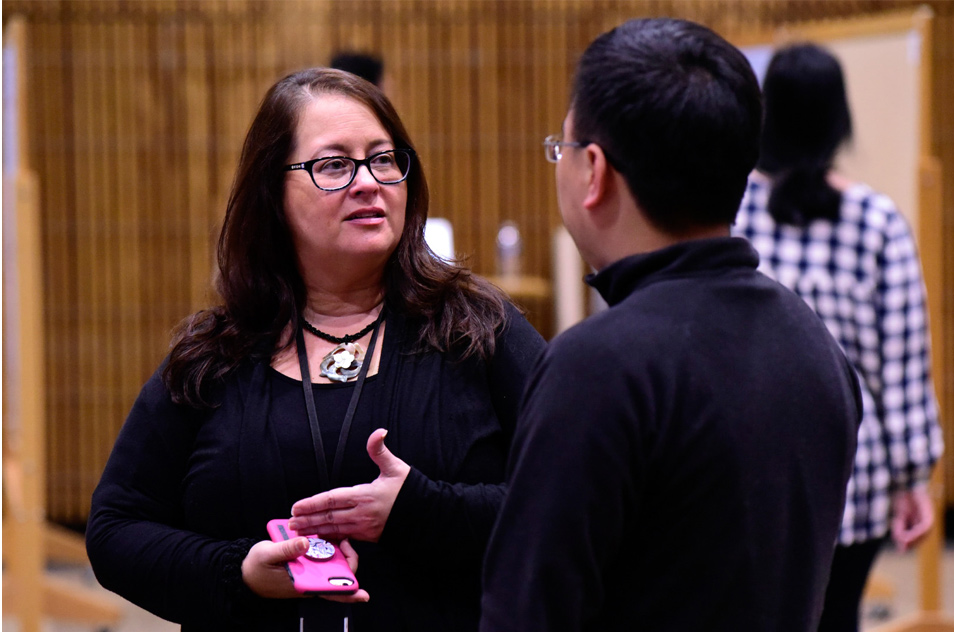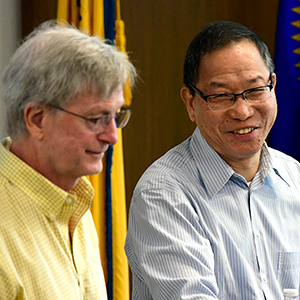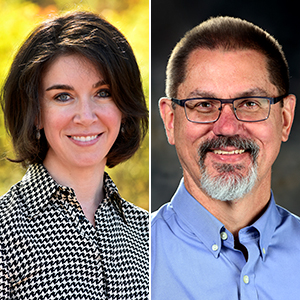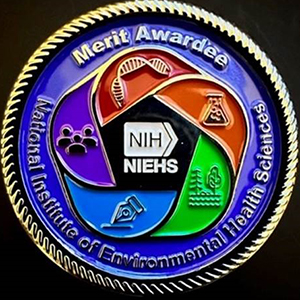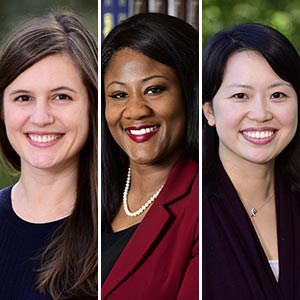Would you like a glimpse into the inner workings of a cell? Have you ever wondered how the genome editing technology CRISPR works? Do you want to learn about the animal studies conducted at NIEHS? These are a few of the questions that drew researchers to Rodbell Auditorium on April 3 for NIEHS Core Day.
More than one hundred researchers browsed the posters displayed at the annual event, snacking on cookies and soda while stopping to talk with representatives from 18 different core laboratories (see sidebar) at the institute. These facilities provide state-of-the-art equipment and valuable expertise to in-house researchers.
Expertise and efficiency
Core facilities have enabled researchers to undertake new lines of inquiry that they might not have attempted before, because of limited time, resources, or expertise.
“Instead of trying to do it all themselves, researchers can turn to experts, many of whom have been doing this work for decades, and get a jump start on what they want to do,” said Robert Petrovich, Ph.D., organizer of the event and director of the Protein Expression Core Facility. “Because cores have their own budgets, it also stretches research dollars.”
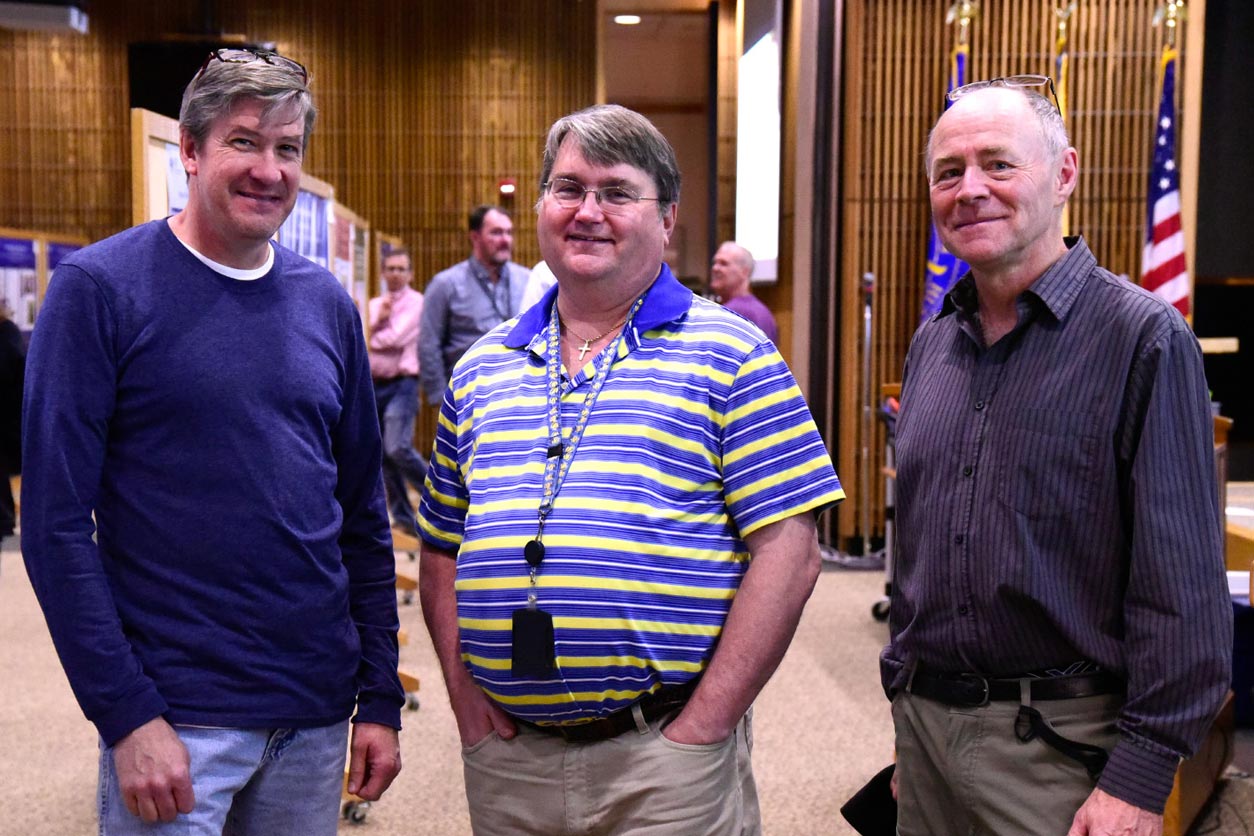 Petrovich, center, took a break from presenting his poster to compare notes with Jeffrey Kuhn, Ph.D., left, and Olivier Lardinois, Ph.D., right, from the Mass Spectrometry Research and Support Group. (Photo courtesy of Steve McCaw)
Petrovich, center, took a break from presenting his poster to compare notes with Jeffrey Kuhn, Ph.D., left, and Olivier Lardinois, Ph.D., right, from the Mass Spectrometry Research and Support Group. (Photo courtesy of Steve McCaw)“Core Day is all about exchanging information about the many core services at NIEHS that are available to support our research community,” said NIEHS Deputy Scientific Director Paul Doetsch, Ph.D. “It is a great opportunity to directly interact with core directors and staff to learn about what the cores do, what technologies are employed, and whether someone’s research needs can be helped by a core.”
Technology at their fingertips
The breadth of services provided by core facilities would be difficult to rival at most university research centers, Doetsch noted. These services continue to expand as technology and scientific knowledge advance.
For example, Mario Borgnia, Ph.D., directs a facility devoted to cryo-electron microscopy (EM), an increasingly popular technique used to map the structure of proteins at the level of individual atoms. When the facility opened less than two years ago, it was the first of its kind in both North and South Carolina.
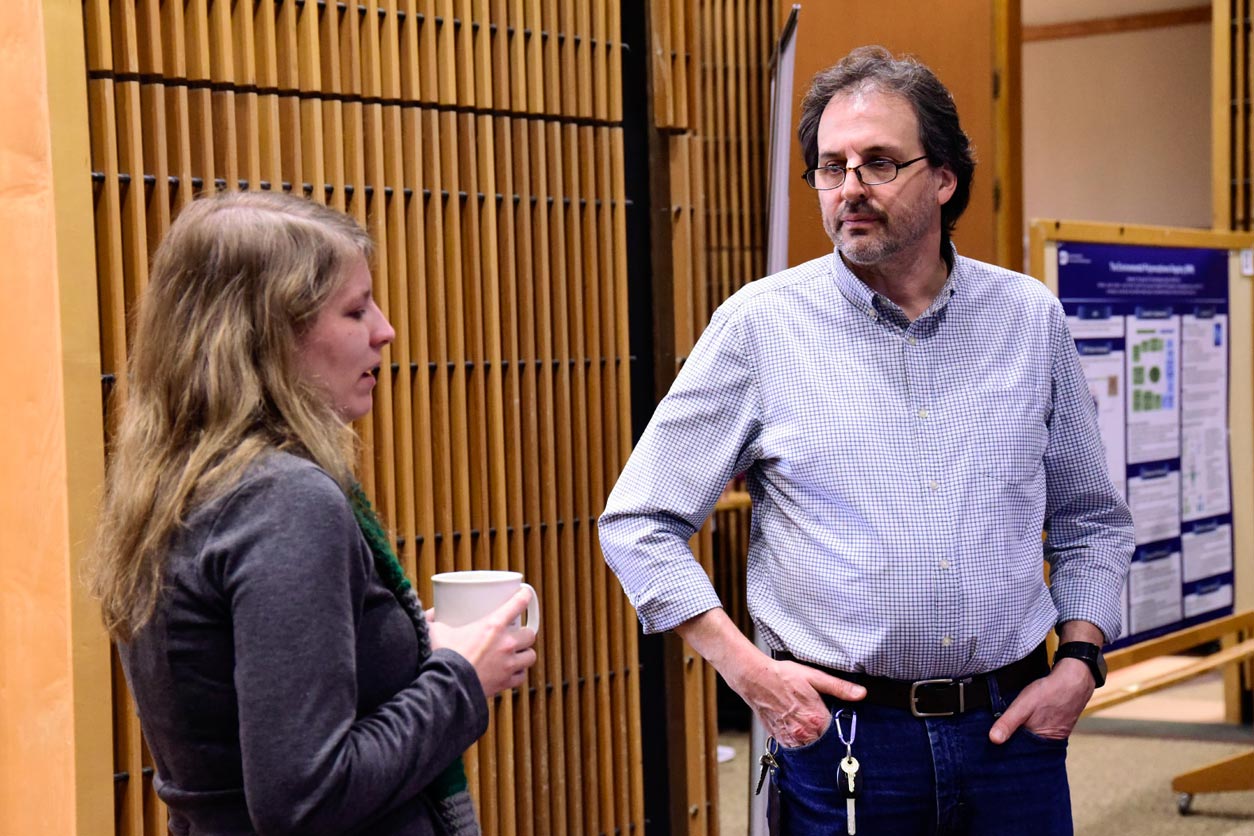 Borgnia, right, and library fellow Sharon Kabel discussed the cryo-EM facility. (Photo courtesy of Steve McCaw)
Borgnia, right, and library fellow Sharon Kabel discussed the cryo-EM facility. (Photo courtesy of Steve McCaw)The newest addition to the lineup of NIEHS core facilities is the Ideas and Innovation Makerspace. “We are hoping this will become a big deal around here,” said James Hunnicutt Jr., who became director of the future facility at the end of March. “There are a lot of people here with a lot of ideas. If you could take those ideas and materialize them, giving researchers a way to channel their thoughts into the physical world, that could be groundbreaking.”
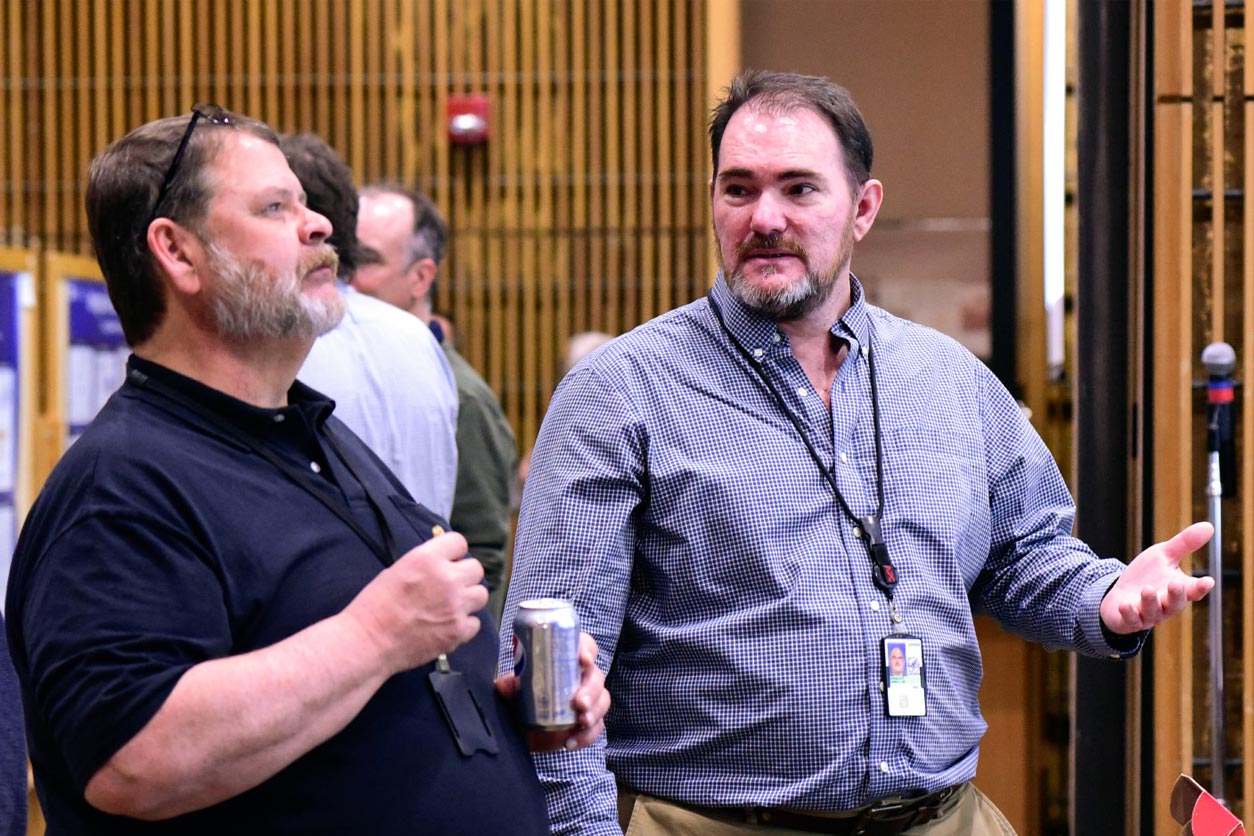 Hunnicutt, right, shared his excitement for the new makerspace with Greg Solomon, manager of the Epigenomics and DNA Sequencing Core Laboratory. (Photo courtesy of Steve McCaw)
Hunnicutt, right, shared his excitement for the new makerspace with Greg Solomon, manager of the Epigenomics and DNA Sequencing Core Laboratory. (Photo courtesy of Steve McCaw)Ian Chen, M.D., Ph.D., a fellow in the National Toxicology Program (NTP) Stem Cell Toxicology Group, stopped by to show Hunnicutt a picture of a device he is hoping they can create together. Chen wants to use the device to grow little balls of cells he uses to test chemical toxicity. The company in New Zealand that once made the device discontinued it, so Hunnicutt is hoping the in-house facility can help him replace the supply.
(Marla Broadfoot, Ph.D., is a contract writer for the NIEHS Office of Communications and Public Liaison.)





